ESG Investing Style Risk: Impact investing and/or Environmental, Social and Governance (ESG) managers may take into consideration factors beyond traditional financial information to select securities, which could result in relative investment performance deviating from other strategies or broad market benchmarks, depending on whether such sectors or investments are in or out of favor in the market. Further, ESG strategies may rely on certain values based criteria to eliminate exposures found in similar strategies or broad market benchmarks, which could also result in relative investment performance deviating. There is no assurance that employing ESG strategies will result in more favorable investment performance.
Morningstar Sustainability Rating ™ The Morningstar® Sustainability Rating™ is intended to measure how well the issuing companies or countries of the securities within a fund’s portfolio are managing their financially material environmental, social and governance, or ESG, risks relative to the fund’s Morningstar Global Category peers. Morningstar assigns Sustainability Ratings by combining a portfolio's Corporate Sustainability Rating and Sovereign Sustainability Rating proportional to the relative weight of the (long only) corporate and sovereign positions. The Morningstar Sustainability Rating calculation is a five-step process. First, the Corporate Sustainability Score and Sovereign Sustainability Score are both derived. Funds require at least 67% of corporate assets be covered by a company-level ESG Risk Score from Sustainalytics1 to receive a Morningstar Portfolio Corporate Sustainability Score. Funds require at least 67% of sovereign assets be covered by a Country Risk Score from Sustainalytics1 to receive a Morningstar Portfolio Sovereign Sustainability Score. The Morningstar Corporate and Sovereign Sustainability Scores are asset-weighted averages of company-level ESG Risk Scores for corporate holdings or Country Risk Scores for sovereign holdings. Both scores range between 0 to 100, with a higher score indicating that a fund has, on average, more of its assets invested in companies or countries with high ESG Risk. Second, the Corporate and Sovereign Historical Sustainability Scores are weighted moving averages of the respective Portfolio Corporate and Sovereign Sustainability Scores over the past 12 months, to reduce volatility. The Historical Corporate and Sovereign Sustainability Scores range between 0 to 100, with a higher score indicating that a fund has, on average, more of its assets invested in companies or countries with high ESG Risk, on a consistent historical basis. Third, the Morningstar Corporate Sustainability Rating and Sovereign Sustainability Rating are then assigned to all scored funds within Morningstar Global Categories. In order to receive a Corporate Sustainability Rating or Sovereign Sustainability Rating, at least thirty (30) funds in the Category receive a Historical Corporate Sustainability Score and a Historical Sovereign Sustainability Score respectively. The Ratings is determined by each fund's Corporate and Sovereign Sustainability Score rank within the following distribution: · High (highest 10%) · Above Average (next 22.5%) · Average (next 35%) · Below Average (next 22.5%) and · Low (lowest 10%) Both the Corporate and Sovereign Ratings rely on distribution of scores within a Morningstar Global Category. In cases where there is little to no distribution for sovereign or corporate scores within a peer group, Morningstar defaults from the middle outwards, so that if there was no distribution, all portfolios in the peer group would receive an ‘Average’ rating assignment, and if there was very limited distribution, all portfolios may only fall under some of the five rating groups. Morningstar applies an absolute value breakpoint buffer to ensure breakpoints meet a minimum requirement of distribution. This value is assessed on an annual basis and will represent 10% of the standard deviation for all Sovereign Sustainability Scores for the Sovereign Sustainability Rating assignments, and 10% of the standard deviation for all Corporate Sustainability Scores for the Corporate Sustainability Rating assignments. Fourth, because the distribution rules are applied within global categories, portfolios exposed to high ESG Risk could still receive favorable Sustainability Ratings. For example, portfolios within the energy category exhibit high ESG Risk levels. Therefore, as a final ratings check, we impose requirements on the level of ESG Risk. If Portfolio Corporate or Sovereign Sustainability score is above 40, then the fund receives a Low Corporate or Sovereign Sustainability Rating · If Portfolio Corporate or Sovereign Sustainability score is above 35 and preliminary rating is Average or better, then the fund is downgraded to Below Average for the respective Corporate or Sovereign rating · If Portfolio Corporate or Sovereign Sustainability score is above 30 and preliminary rating is Above Average, then the fund is downgraded to Average for the respective Corporate or Sovereign rating · If Portfolio Corporate or Sovereign Sustainability score is below 30, then no adjustment is made. Fifth, the Portfolio Sustainability Rating is determined by combining a portfolio's Corporate Sustainability Rating and Sovereign Sustainability Rating proportional to the relative weight of the (long only) corporate and sovereign positions, rounding to the nearest whole number. In order to receive a Portfolio Sustainability Rating, a fund must have both a Corporate Sustainability Rating and Sovereign Sustainability Rating, unless one of either the Corporate or Sovereign portion of the fund is less than 5% of the fund. The Morningstar Sustainability Rating is depicted by globe icons where High equals 5 globes and Low equals 1 globe. Since a Sustainability Rating is assigned to all funds that meet the above criteria, the rating it is not limited to funds with explicit sustainable or responsible investment mandates. Morningstar updates its Sustainability Ratings monthly. The Portfolio Corporate and Sovereign Sustainability Scores are calculated when Morningstar receives a new portfolio. Then, the Historical Corporate and Sovereign Sustainability Scores, the Corporate and Sovereign Sustainability Ratings, and the overall Sustainability Rating are calculated one month and six business days after the reported as-of date of the most recent portfolio. When deriving the Sustainability Rating, Morningstar uses the portfolio with same effective date as the rating, and if this is not available, will defer to the most recent portfolio up to nine months back. This is in order to accommodate varying disclosure requirements across different markets and managed portfolio types. Please click on http://corporate1.morningstar.com/SustainableInvesting/ for more detailed information about the Morningstar Sustainability Rating methodology and calculation frequency.1 Sustainalytics is an independent ESG and corporate governance research, ratings, and analysis firm. Morningstar, Inc. holds a non-controlling ownership interest in Sustainalytics.
Morningstar Low Carbon Designation™ Disclosure The Morningstar® Low Carbon Designation™ is intended to allow investors to easily identify low-carbon funds across the global universe. The designation is an indicator that the companies held in a portfolio are in general alignment with the transition to a low-carbon economy. The designation is given to portfolios that have low carbon-risk scores and low levels of exposure to fossil fuels. To determine carbon-risk scores and fossil fuel involvement, Morningstar uses Sustainalytics’ company-level data2. The Morningstar® Portfolio Carbon Risk Score™ measures the risk that companies in a portfolio face from the transition to a low-carbon economy. The Morningstar® Portfolio Fossil Fuel Involvement™ percentage assesses the degree to which a portfolio is exposed to thermal coal extraction and power generation as well as oil and gas production, power generation, and products & services. To receive a Morningstar Portfolio Carbon Risk Score, at least 67% of portfolio assets must have a carbon-risk rating from Sustainalytics. The percentage of assets covered is rescaled to 100% before calculating the score. To receive the designation, a portfolio must meet two criteria: × A 12-month trailing average Morningstar Portfolio Carbon Risk Score below 10 × A 12-month trailing average exposure to fossil fuels less than 7% of assets, which is approximately a 33% underweighting to the global equity universe Funds receive the Low Carbon designation based on the most recent quarterly calculations of their 12- month trailing average Morningstar Portfolio Carbon Risk Scores and Morningstar Portfolio Fossil Fuel Involvement. Funds holding the Low Carbon designation that no longer meet the criteria will not receive the designation for the subsequent quarter. All Morningstar Portfolio Carbon Metrics, including the Morningstar Portfolio Carbon Risk Score, Morningstar Portfolio Fossil Fuel Involvement, and the Morningstar Low Carbon Designation, are calculated quarterly. Portfolio carbon metric calculations will be completed on the sixth business day in February, May, August, and November. Please visit http://corporate1.morningstar.com/SustainableInvesting/ for more detail information about the Morningstar Low Carbon Designation and its calculation.
© 2022 Morningstar. All rights reserved. The information contained herein: (1) is proprietary to Morningstar and/or its content providers; (2) may not be copied or distributed; and (3) is not warranted to e accurate, complete, or timely. Neither Morningstar nor its content providers are responsible for any damages or losses arising from any use of this information. Past performance is no guarantee of future results.



